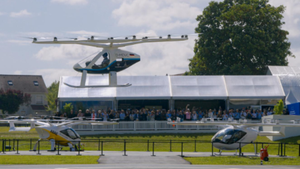NB-IoT and LTE-M to Be Merged into 5G Standards
The addition of these two technologies will allow for the support of mass-market IoT deployments.
May 22, 2018

NB-IoT and LTE-M will be included as 5G mobile standards set to be completed by 3GPP next month, according to GSMA.
Confirming these two licensed Low-Power Wide-Area (LPWA) networks as standards will encourage operators and vendors to support these implementations for IoT deployments, and start to build the evolutionary road to 5G, according to Mike Sapien, vice president and chief analyst, Ovum. 3GPP is the global telecommunications standards body, and GSMA is the global trade organization for mobile operators.
“5G may be years away, but these two technologies allow for the support of many mass-market IoT deployments now,” he said via email interview. “Having this complete in June means that many operators, device makers and IoT solution providers can plan for this deployment in 2018 and early 2019. It is just the start, but a good start to overall standardization and a road to more commercially available services and devices going into 2019.”
At the end of March 2018, there were a total of 43 commercial NB-IoT and LTE-M networks launched, according to the GSMA report, “NB-IoT and LTE-M in the 5G context.” The paper from the global trade organization highlights the role Mobile IoT networks will play in enabling use cases such as the development of smart cities and industrial automation.
“NB-IoT and LTE-M, as deployed today, are part of the 5G family,” GSMA wrote. “With the dawn of the 5G era, this paper explains how both NB-IoT and LTE-M technologies are an integral part of 5G, and that 5G from the LPWA perspective, is already here today.”
3GPP is set to complete Release 15 in June. 3GPP will also not include any additional LPWA requirements in its next release, meaning that NB-IoT and LTE-M will coexist with other 3GPP technologies and fulfill long-term 5G LPWA requirements, according to a press release from GSMA.
LTE-M “supports lower device complexity, massive connection density, low device power consumption, low latency and provides extended coverage, while allowing the reuse of the LTE installed base,” according to the report. NB-IoT is characterized by “improved indoor coverage, support of massive number of low throughput devices, low delay sensitivity, ultra-low device cost, low device power consumption and optimized network architecture,” according to the report.
Low power is always an issue for many mass-market IoT deployments, so this addresses the needs of many IoT solutions and environments that need longer lasting, low power devices which may require longer payback periods, Sapien wrote.
“This will encourage many more customers to deploy knowing that the device will be standards based and last for longer term to provide payback in investment,” he wrote. “And lower the risk of obsolescence with the new deployments that are installed in the early phase of this new IoT network and use cases.”
About the Author
You May Also Like





